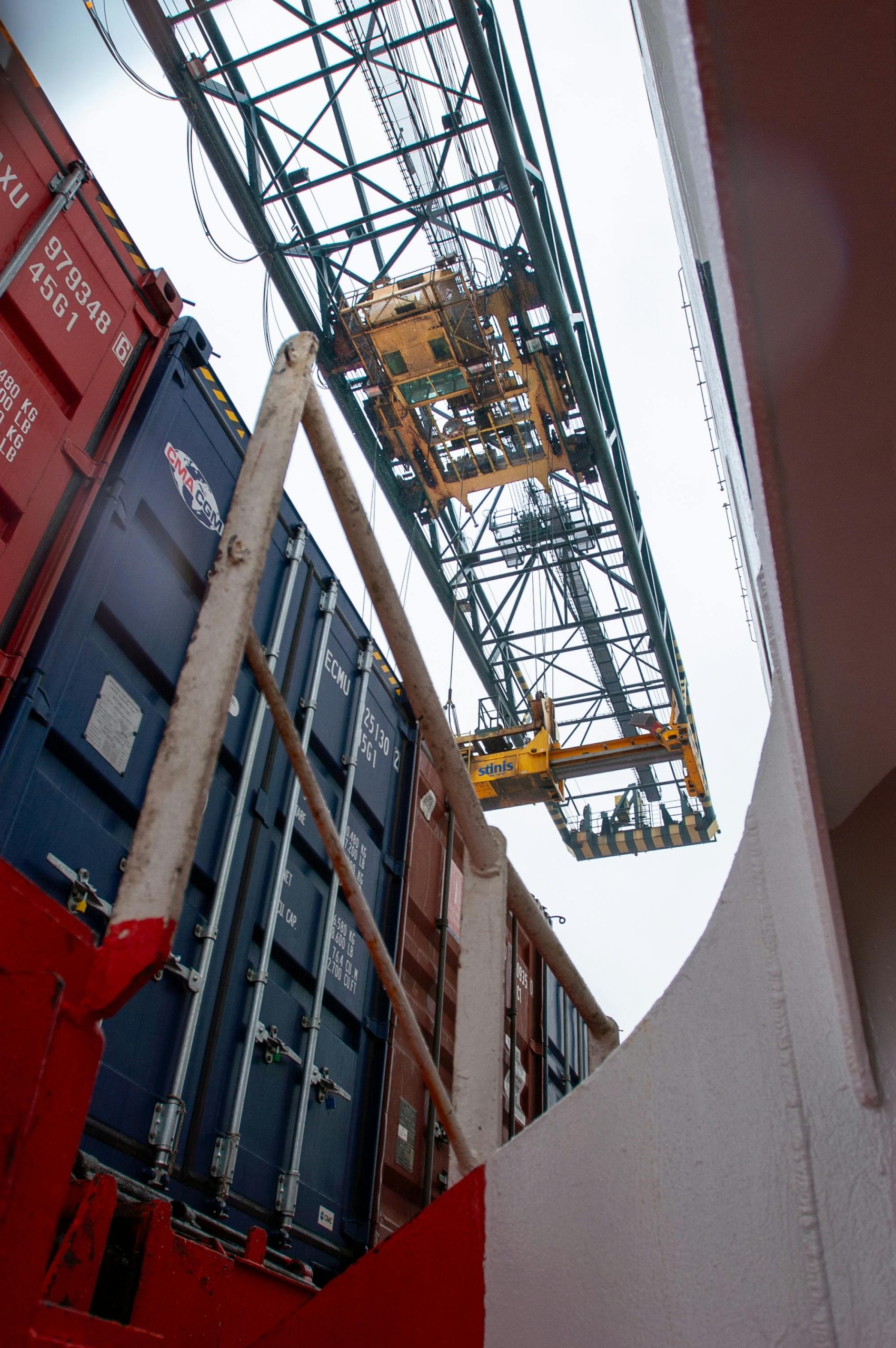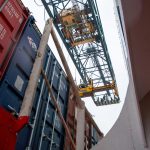Safety remains the foundation of effective overhead crane engineering. Ensuring compliance with rigorous standards and integrating advanced design features reduces risks and protects personnel. Tailored solutions, thorough inspections, and expert supervision all contribute to safer operations, enabling industries to lift heavy loads confidently while minimising downtime and hazards. Practical engineering choices make a measurable difference in everyday crane use.
Overview of Overhead Crane Engineering and Safety Standards
Smithwick Engineering emphasizes the importance of strict compliance with crane safety standards and engineering principles. Adhering to CE Mark standards ensures that overhead crane systems meet rigorous safety and quality benchmarks, minimizing risks in operation. UK manufacturers, like those highlighted in recent reviews, demonstrate a strong commitment to engineering excellence—designing lightweight, robust components that support safe lifting.
Also to discover : The ultimate wholesale coffee supplier for your business needs
Key industry safety standards, such as EN 13155 and OSHA regulations, influence both design and operation. Regulatory bodies oversee compliance, ensuring that crane systems are thoroughly tested for stability, load capacity, and structural integrity before installation.
Attention to materials selection, structural analysis, and dynamic load impact influences safety and durability. As an example, custom-designed crane trolley components and precise load distribution calculations are fundamental for efficient and secure operations.
Also to read : How can UK business owners balance work-life integration effectively?
Overall, thorough safety protocols, regular inspections, and compliance with evolving safety standards safeguard operators and prolong equipment lifespan.
Fundamental Engineering Principles and Load Capacity Calculations
Load Capacity Determination
Crane load capacity calculations start with precise measurements of maximum expected lifting loads and application-specific requirements. Structural analysis for crane systems involves assessing every element’s strength, using both standard and advanced techniques. Engineers use load distribution in crane beams to ensure the correct spread of weight along single or double girders—this prevents local overloads and improves the lifespan of the structure. Modern load chart interpretation for operators remains a cornerstone of overhead lifting regulations, guiding safe use while maximizing performance.
Structural Analysis Techniques
Rigorous structural analysis for crane systems incorporates finite element analysis in crane design, accounting for various forces, including the impact from dynamic loads. Selecting optimal steel types used in crane manufacturing increases both load handling and corrosion resistance. Each component, from hoists to the wire rope mechanics, is evaluated for compatibility, ensuring safe load distribution in crane beams and compliance with crane safety standards.
Dynamic Load Impact and Fatigue Considerations
Dynamic load impact on crane structures often results from acceleration, deceleration, or unexpected motion. Fatigue analysis of crane components is essential to identify wear and tear in moving crane parts, especially in areas with frequent load changes. These factors inform the lifecycle management of overhead crane systems and reinforce the importance of regular maintenance strategies for lifting equipment, reducing the risks associated with long-term dynamic stress.
Design Standards, Materials, and Structural Components
Compliance with International and Local Design Codes
Overhead crane design principles are guided by crane safety standards compliance. These regulatory guidelines for crane installation ensure each system undergoes detailed structural analysis for crane systems and meets required overhead lifting regulations. Local legislation and international standards, such as CE Marking, ISO 9001, and recommendations from regulatory bodies for crane safety, govern all aspects from design to maintenance checklist for overhead cranes. Careful application of these standards supports proper risk assessment in crane operations, helping minimize the risk of incidents.
Material Selection: Steel Types and Corrosion Resistance
Materials selection for crane construction emphasizes steel types used in crane manufacturing, such as high-tensile structural steel to optimize both strength and fatigue analysis of crane components. Steel selection impacts load distribution in crane beams and long-term crane lifecycle management. Corrosion resistance in crane materials is prioritized, particularly for outdoor or hazardous environments. Galvanised coatings and advanced crane paint and coating technologies reduce maintenance needs and extend service life.
Structural Integrity: Frames, Beams, and Foundations
Ensuring structural integrity starts with robust frames and careful analysis of crane foundation requirements. Correct crane load capacity calculations, finite element analysis in crane design, and understanding dynamic load impact on crane structures prevent structural defects in crane beams. The structural analysis for crane systems—especially for customized crane solutions or heavy-duty bridge cranes—adopts stability analysis for crane structures and regular inspection protocols for overhead cranes for continued reliability and operator safety.
Safety Compliance, Inspection Protocols, and Risk Assessments
Safety Regulations and Certification Requirements
Crane safety standards compliance is mandated by stringent regulatory guidelines for crane installation and operation. Operators and facility managers must ensure every overhead crane, gantry, or bridge system meets ISO and CE Mark directives, with regular audits confirming adherence. Certification relies on comprehensive crane operator certification programs, up-to-date operator safety equipment, and compliance with overhead lifting regulations. Documented standards for crane manufacturing, global standards for crane equipment, and recognized regulatory bodies for crane safety all play roles in this framework.
Routine Inspection and Maintenance Procedures
Standardized inspection protocols for overhead cranes require systematic assessments at intervals dictated by regulatory guidelines for crane installation and ongoing use. Using a detailed maintenance checklist for overhead cranes, inspectors examine wire rope mechanics, load distribution in crane beams, and the integrity of structural elements. Inspections cover crane load capacity calculations, hydraulic vs. electric crane systems, fatigue analysis of crane components, and crane downtime reduction techniques. Performance optimization is enhanced by predictive maintenance technologies and data logging in crane operation.
Conducting Effective Risk Assessments
Effective risk assessment in crane operations identifies potential hazards related to dynamic load impact on crane structures and operator fatigue management. Failure mode and effects analysis (FMEA) for cranes is conducted to evaluate crane hoist engineering and crane trolley design vulnerabilities. Industrial safety audits and accident prevention in material handling contribute to robust overhead crane design principles while emergency stop systems and advanced sensor applications in cranes provide immediate safety interventions.
Modern Technologies, Automation, and Control Systems
Benefits of Crane Automation
Automation in crane control systems transforms material handling by maximizing productivity and reducing human error. From instant load adjustments to pre-programmed cycle movements, operators experience safer and more consistent lifting. Overhead crane automation benefits industrial settings by minimizing downtime, improving load handling accuracy, and supporting stricter compliance with crane safety standards. These systems reduce operator fatigue and enable a stronger focus on accident prevention in material handling, resulting in fewer unplanned interruptions.
Integration of Control Systems and Sensors
Control system integration brings together sensors and programmable logic controllers for advanced overhead lifting regulations. Advanced sensor applications in cranes monitor critical parameters—such as load distribution in crane beams or dynamic load impact on crane structures—helping teams conduct fatigue analysis of crane components continuously. This integration boosts predictive maintenance technologies, enabling early intervention and smooth operation without compromising the structural integrity required by standards for crane manufacturing.
Remote Monitoring and Data Logging
Remote monitoring technologies for cranes ensure that vital performance data is logged and accessible in real-time. Wireless communication in crane systems relays detailed telemetry, supporting maintenance checklist for overhead cranes and providing thorough insights into wear and tear in moving crane parts. Data logging in crane operation not only streamlines maintenance strategies for lifting equipment, but also strengthens compliance with regulatory guidelines for crane installation and operator safety equipment.
Maintenance Strategies, Troubleshooting, and Upgrades
Preventive and Predictive Maintenance Approaches
Effective maintenance strategies for lifting equipment focus on reducing downtime and ensuring safety. Preventive maintenance involves scheduled inspections, lubrication, and part replacements, following a thorough maintenance checklist for overhead cranes. Predictive maintenance technologies leverage data logging, remote monitoring technologies for cranes, and advanced sensor applications in cranes to anticipate failures before they occur. Early diagnosis of wear and tear in moving crane parts enables teams to swiftly address potential issues, helping maintain compliance with overhead lifting regulations and improving crane lifecycle management.
Common Faults and Troubleshooting Guides
Troubleshooting common crane faults starts with structured inspection protocols for overhead cranes. Operators frequently encounter problems such as wire rope mechanics irregularities, misaligned crane trolley design elements, and errors in power transmission in crane motors. Using standardized crane load capacity calculations and reviewing control system integration helps quickly pinpoint faults. A logical best practices for crane repair process encompasses testing overload protection systems, inspecting electrical systems for crane operation malfunctions, and verifying remote monitoring technologies for cranes alerts, drawing on robust troubleshooting common crane faults guides.
Upgrading and Retrofitting Existing Cranes
Upgrading through modern crane refurbishment techniques allows companies to extend service life while making use of predictive maintenance technologies for ongoing reliability. Crane refurbishment and upgrades can include integrating automation in crane control systems, installing wireless communication in crane systems, and enhancing remote monitoring technologies for cranes. Each retrofit supports continued compliance with regulatory guidelines for crane installation, as well as further improvements in maintenance strategies for lifting equipment.
Application Cases, Customization, and Specific Industry Solutions
Industry-specific Crane Design Examples
Industrial applications of overhead cranes span diverse sectors from manufacturing to material handling. Overhead crane design principles focus on maximizing load distribution in crane beams and ensuring compliance with crane safety standards. Structural analysis for crane systems reveals that industries such as automotive, aerospace, and utilities depend on tailored lifting capacities and specialized hoists. Overhead crane applications in construction call for rugged builds, fatigue analysis of crane components, and comprehensive risk assessment in crane operations—addressing both heavy materials and complex site conditions through engineered crane systems.
Custom Features: Remote Controls, Walkways, Floodlights
Customized crane solutions integrate remote monitoring technologies for cranes and automation in crane control systems, aligning ergonomic considerations in crane operation with real-world demands. Walkways, floodlights, and advanced electrical systems for crane operation boost visibility and operational safety. Maintenance strategies for lifting equipment support lifespan extension through predictive maintenance technologies and periodic inspection protocols for overhead cranes—key for accident prevention in material handling and adhering to overhead lifting regulations.
Integration for Large-Scale and Heavy-duty Projects
Modern industry trends in lifting technology emphasize automation, data logging in crane operation, and control system integration for seamless workflow in large-scale projects. Crane hoist engineering paired with dynamic load impact on crane structures ensures robust performance. Finite element analysis in crane design combined with modular crane designs supports adaptability, power transmission in crane motors, and ongoing crane lifecycle management. Custom configurations address evolving safety, efficiency, and technological integration needs for heavy-duty and demanding environments.











